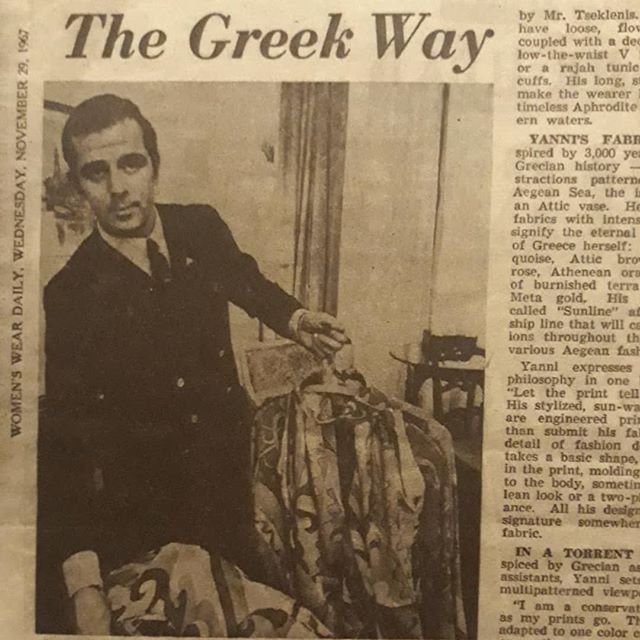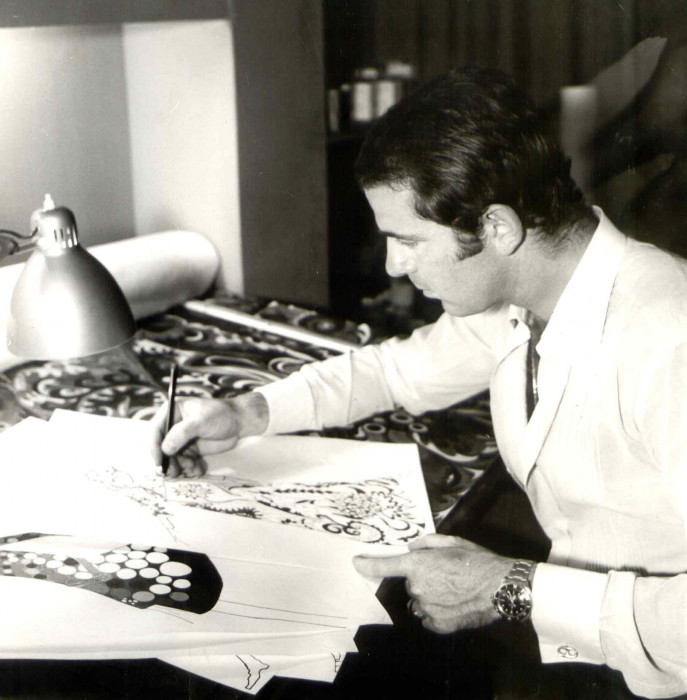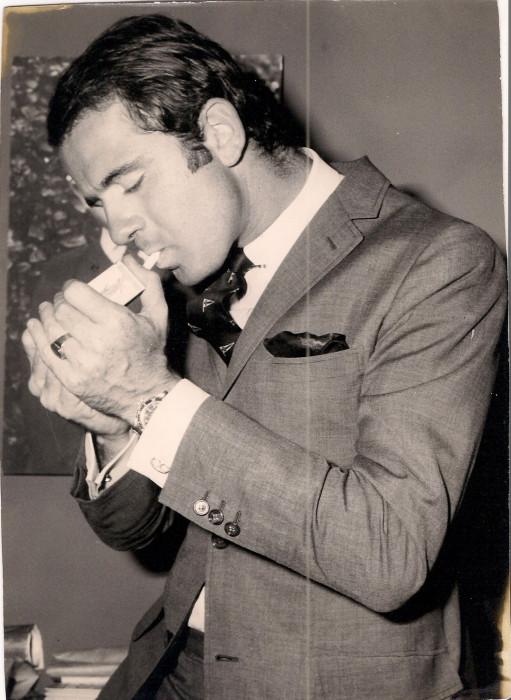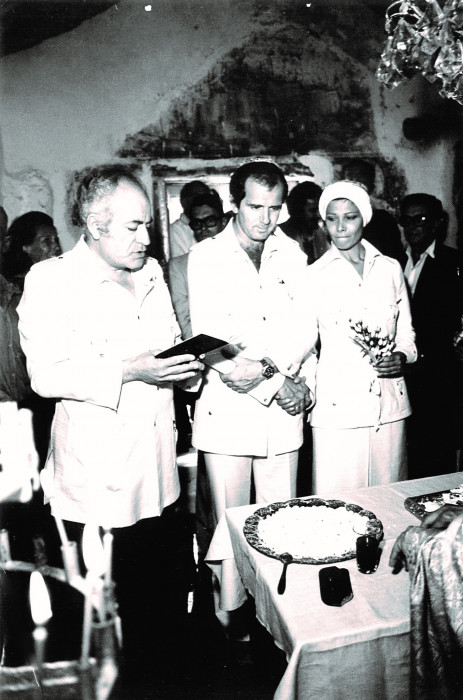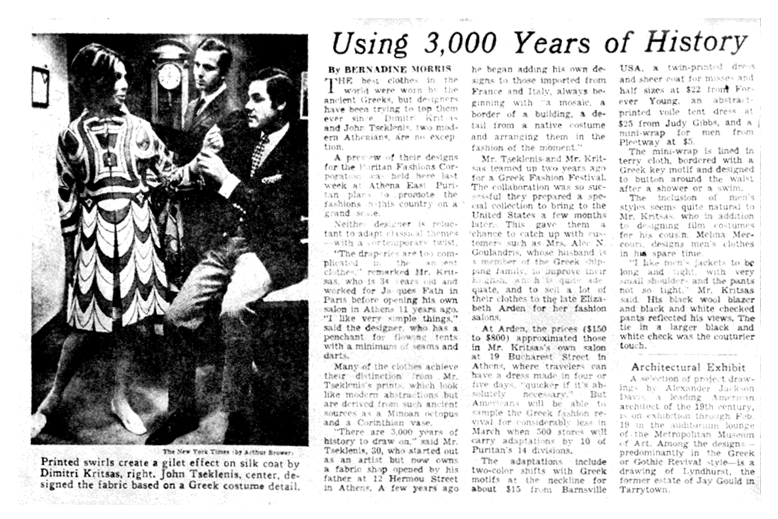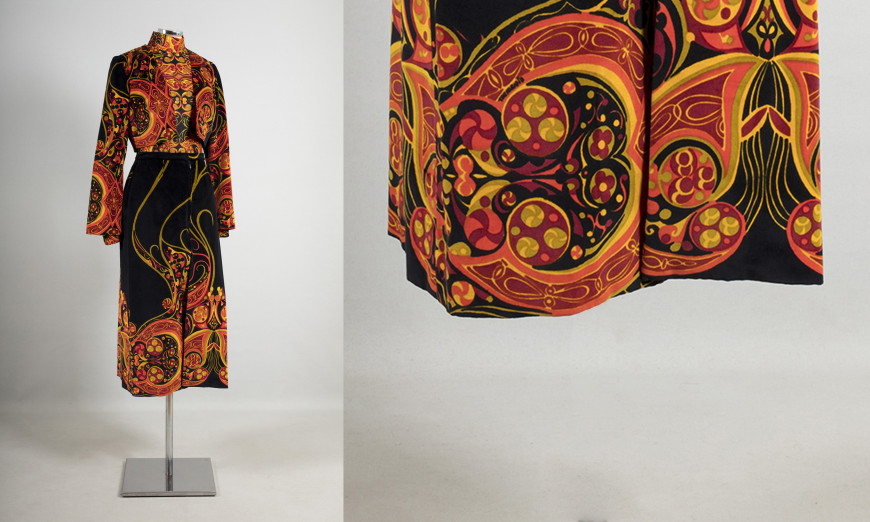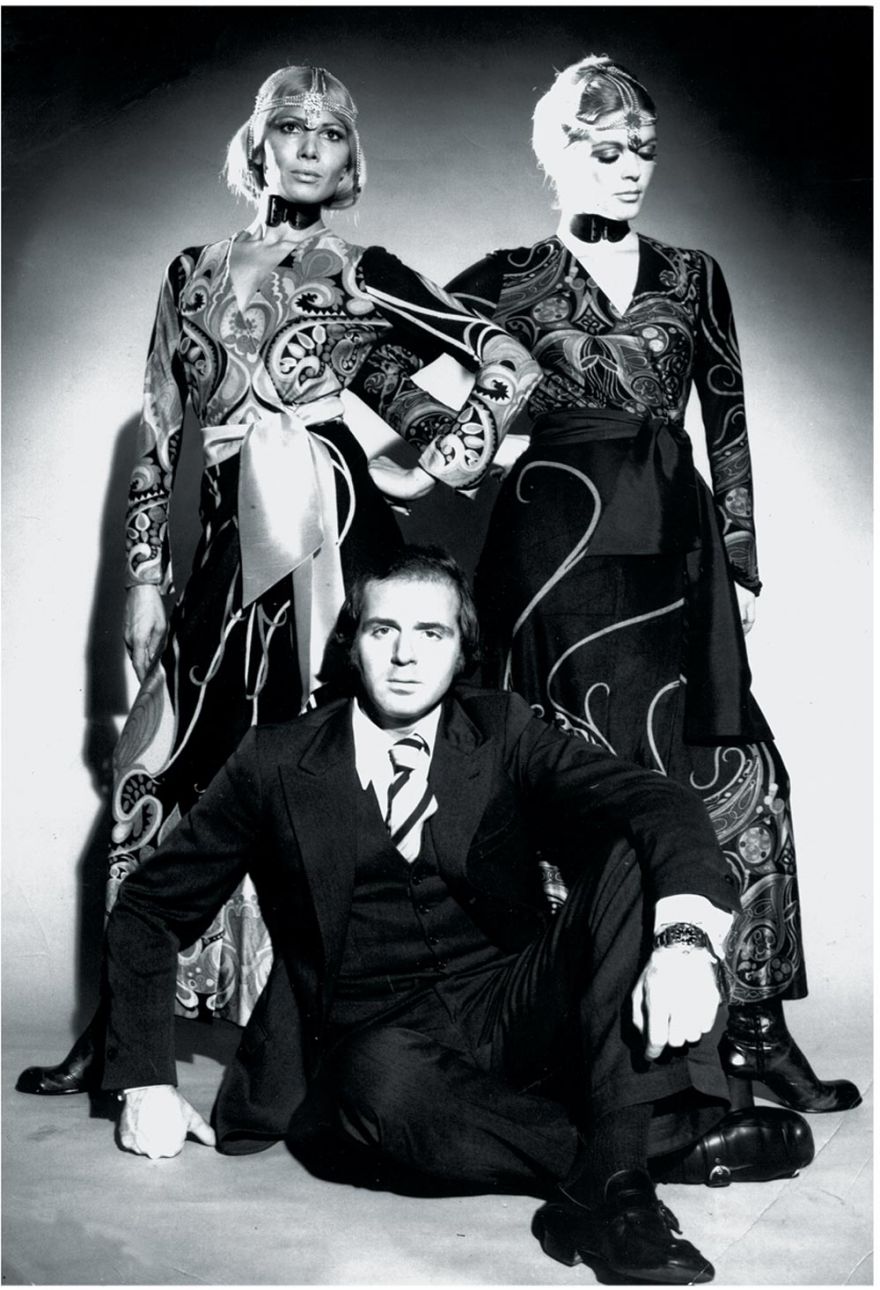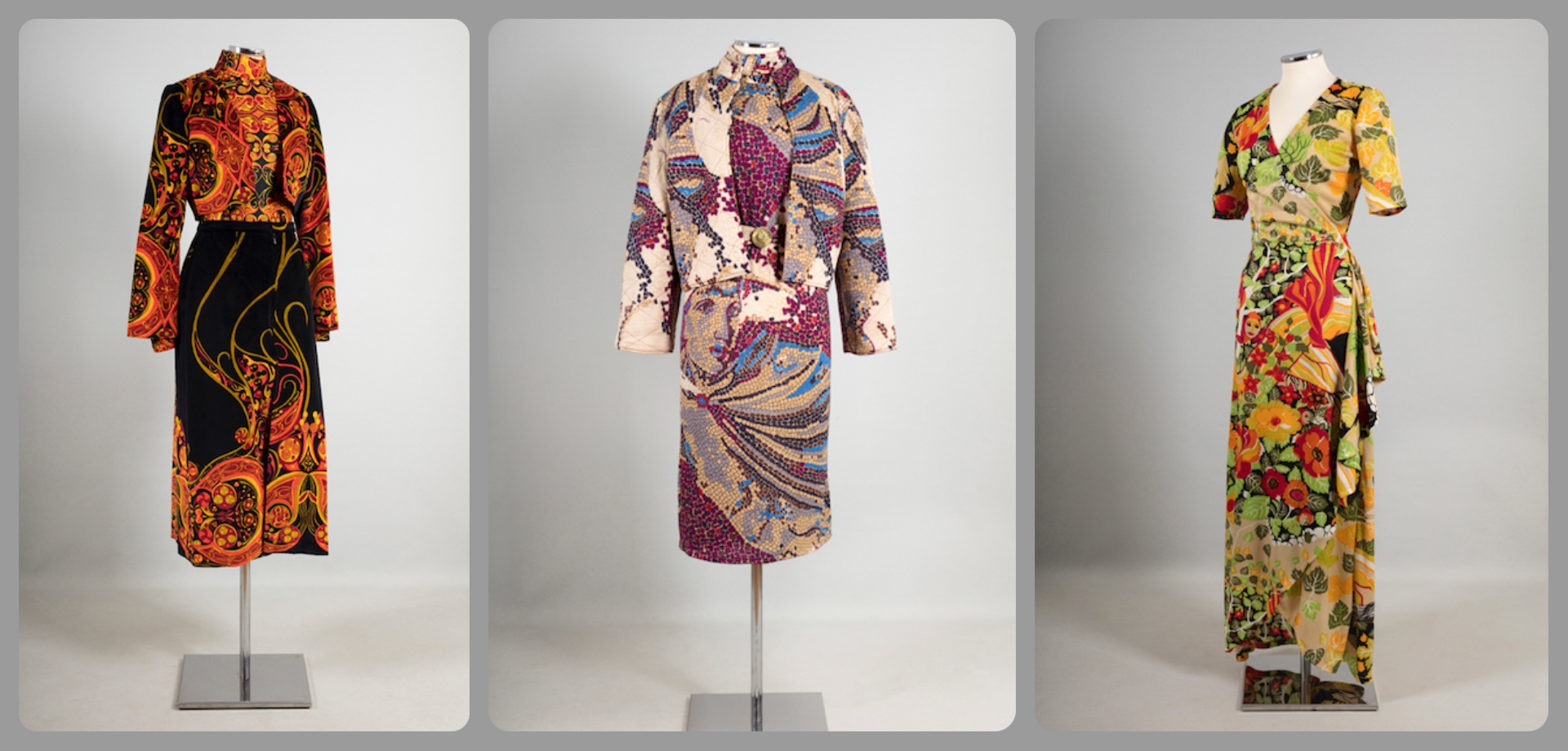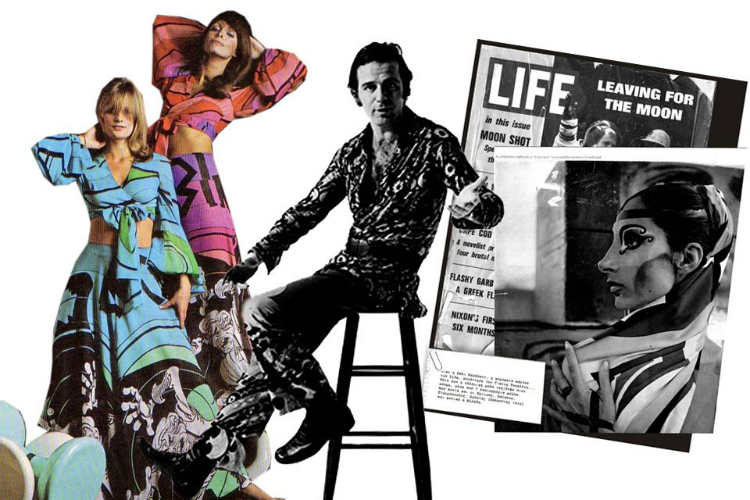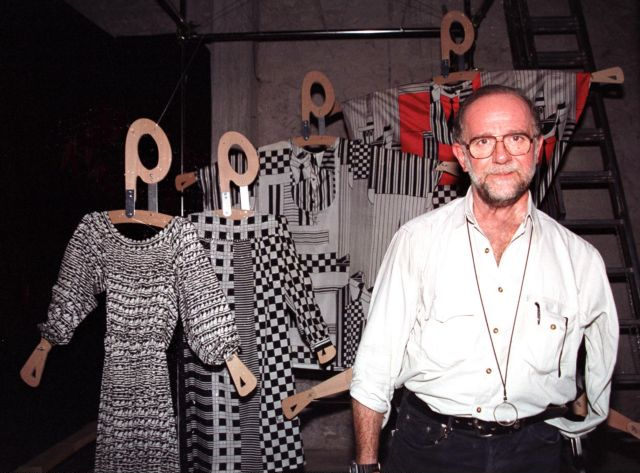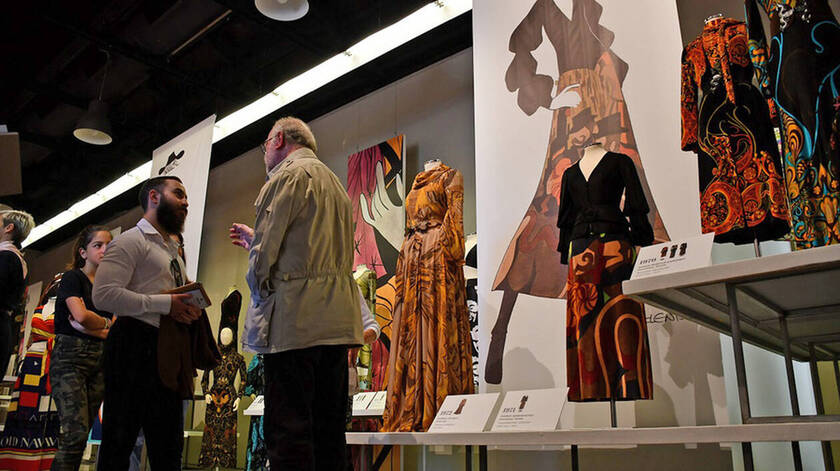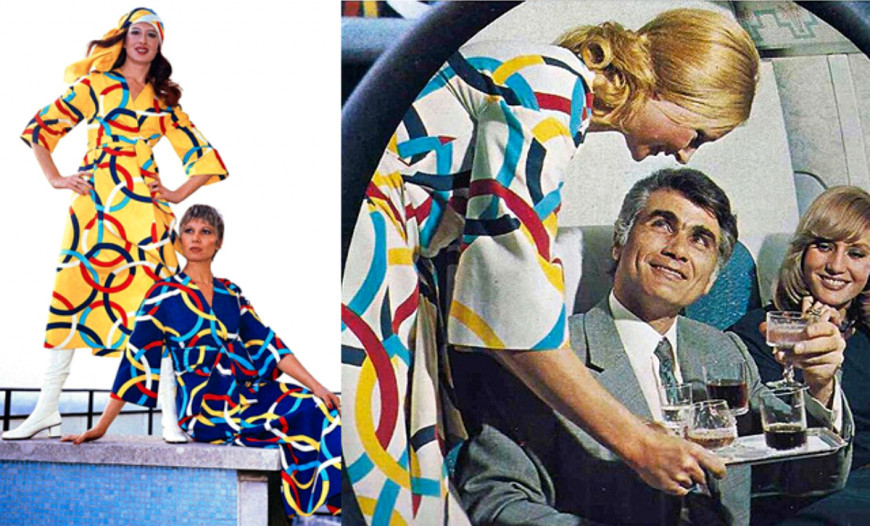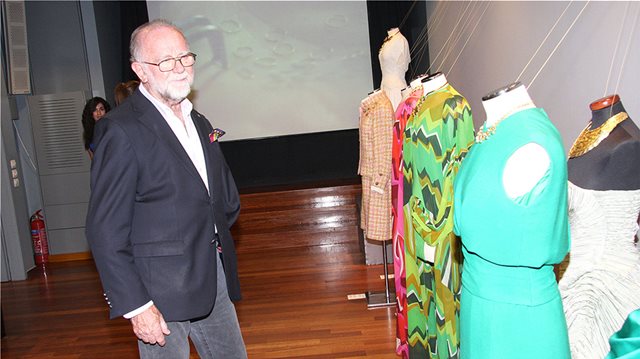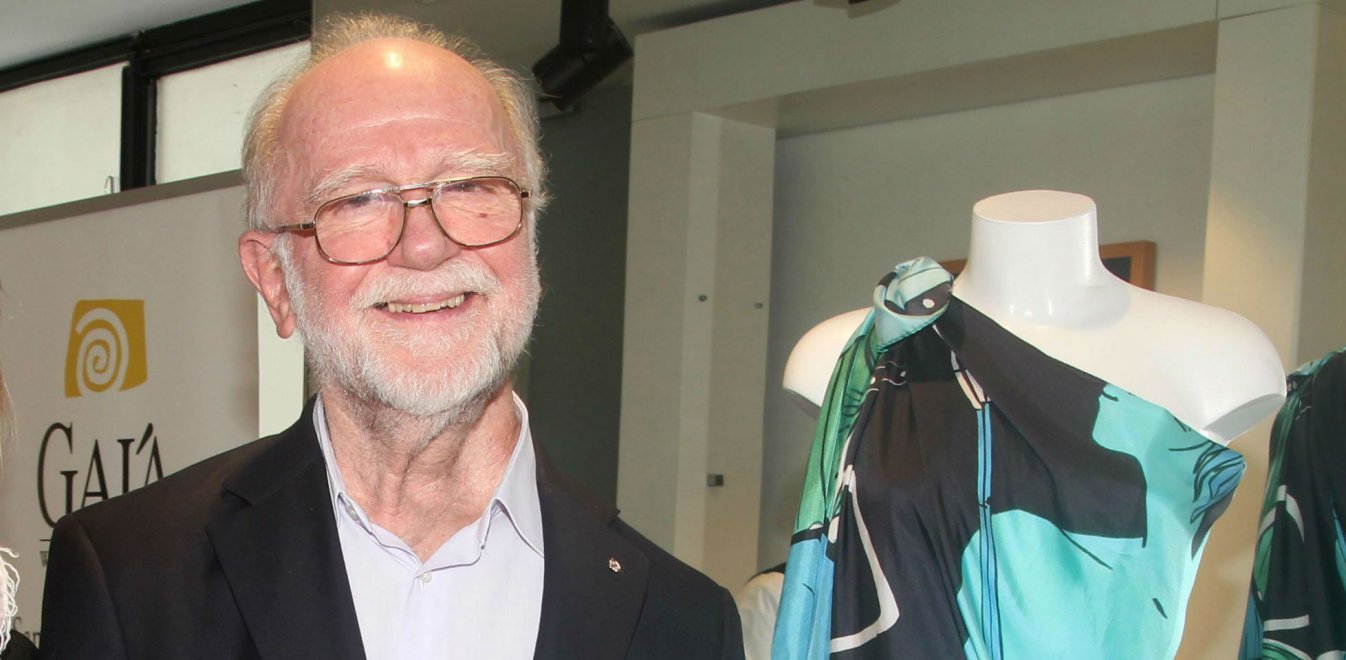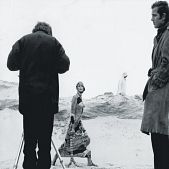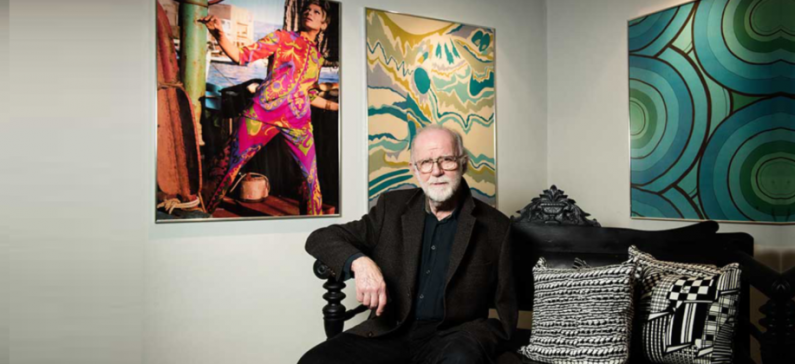
A global legend in design (1937-2020)
Yannis Tseklenis is considered to be the leading Greek fashion designer of the second half of the 20th century, who introduced Greek fashion to the modern international world. His artistic contribution to Greece has been recognized and given various awards, while his designs have been sold worldwide by leading stores in more than 30 countries.
Yannis Tseklenis was born in Athens, on November 6, 1937, with Istanbul origin. He grew up in Athens, attended Athens College and then the Moraitis School. Although, as he had told, he was not a great student, he was a star in organizing student councils, while also designing the school magazines. He was involved in art and life, as he had a good social life from an early age.
At the age of 15, he began working in the family textile business, where he gained valuable experience in painting and drawing.
When the subject of the studies was addressed, he told his father he would stay near the fabric store, but that he would deal with advertising. He had social contacts and friends, such as Spyros Metaxas, who immediately assigned him jobs. Also, his father-in-law – he got married for the first time at the age of 23 – belonged to ELFINKO and his brotherly friend was Angelos Kanellopoulos of the Titan, whose assigned jobs he undertook. He had a desire to leave his mark and that is why his appeal was to take on durable products.
In 1961, at the age of 24, he founded his own advertising company, Spectra Advertising, and undertook the advertising campaigns of major multinational and Greek companies, such as Metaxa, General Motors and Aegean Mills.
In 1962 and 1964, respectively, Yannis Tseklenis was involved in the design and decoration of the interiors for the official celebrations of the weddings of Princess Sophia of Greece with Juan Carlos of Spain and Anna-Maria of Denmark with the then King Constantine II. of Greece.
On the rise of his advertising career, in 1964, his father died and the store remained with him. The store worked with him participating in the selections and along with Mourtzopoulos and Sinanis, later Angelopoulos too, formed the haute couture shops.
His father was the first to notice his son’s instinct and shrewdness in choosing to import fabrics he ordered for the high-fashioned Athenian houses, those designs that a few months later were the dominant trend of the big Parisian houses.
So, before his father died, he gave him a blessing, a wish and a curse together, as he had commented: “Don’t leave fashion. For the last five years, what you buy after six months has been couture in Paris, without you knowing it. ” How? We used to see the collections with the fabrics earlier and I did an analysis of what is for sale and I predicted, let’s say, what was coming. Like marketing. I was taking the trends out of my mind. As if I had an eye for the future in fashion. ”
In 1965, he took over the store and began designing his first fabrics, the Tseklenis Silks collection, in collaboration with Chrysalis silk. It was still the time when there was a thriving Greek industry and it exported thousands of meters and tons of fabrics.
He worked in the store, but it couldn’t contain him. “I was like a bomb. Where could the fifty square meters or the ladies contain me “. And so he thought of making the first set of designs for fabrics for the store, which he showed to various others, without response. Only Dimis Kritsas responded positively and suggested that they take part in the Lambrakis Festival together, for Fashion magazine.
The collection traveled from Thessaloniki where it premiered to Beirut and Venice. At that time, he met the beautiful Efi Mela, a model-star, with whom he fell in love. Their relationship, thanks to her extensive experience in the field of fashion, had been crucial in his business, encouraging him in every new step.
The first major success was the collaboration between the two designers, who decided to proceed with a new collection that would be presented in New York. “How to compete with the French and the Italian in Europe?” he had commented with self-sarcasm. The fact that they had the foresight to present it in the off-market season, that is, the plain period between autumn and Christmas, automatically passed them on to all the afternoon newspapers in New York.
In this first collection, he felt it was his duty to give a Greek element. And so he made the Waves. Within 48 hours, the then 87-year-old Elizabeth Arden, asked to see the collection in person, which she bought in its entirety – as much as the fabrics and Kritsa’s patterns. “The feeling that you were able, from the infamous in-this-sector Greece, to move a leaf of Manhattan, made you feel that you have conquered the city.”
This led to another important collaboration with the giant Puritan Fashion Corporation, which through 16 companies channeled clothing throughout the country. Then, he designed his second personal collection on Minoan motifs and themes to support a campaign entitled “The Greek Fashion Odyssey”, funded by EOT, Olympic Airlines, Brandi Metaxa and Aristotle Onassis personally.
Millions of dollars supported the new collection with advertisements in the international press, screenings on foreign televisions and in the windows of America’s luxury department stores.
The moment these things happened, his first collection was bought by Sinanis, Papagiannis and them. Within half a year, the Tseklenis boutique in Ermou took place. “Following the advice of the Americans, I became independent of Kritsas, because my fabrics were very complex in their designs and did not need to be complex in their sewing.”
His clothes were sold through instore stores by the thousands, a purely “Greek” triumph, and Tseklenis was overjoyed since his great misfortune was for Greece to be seen above all else. At the same time, a series of Tseklenis boutiques opened and he granted production and distribution licenses to major foreign companies that sold their clothing in hundreds of stores in Europe, the Americas and the Far East. So when he was invited to a department store in Australia in 1971, he flew with Qantas to Sydney, to Hong Kong, Bangkok and Singapore intermediate stations, and saw his creations circulate in airport launches.
The same happened a little later, with Byzantine codes and illustrated manuscripts entitled “Byzantium”, forming a modern Greek identity in his collections, while he himself pioneered the organization of a large event of Greek seamstresses in Athens, where important factors in international fashion arrived to watch it.
He also designed the costumes for the Olympic Airlines, Kuwait Airways and Air Malta, as well as interior fabrics for the Aegean textile industry and entered the Japanese market. He was still inspired by various trends and thus created collections, such as “Impressionists” by the French Impressionists or “Czars” from the architecture of pre-revolutionary Russia, in 1972, just at the time when Nixon was visiting Moscow. Images of the idiosyncratic collection accompany on television news the news of the approach of the two superpowers. He was slowly withdrawing production from abroad and bringing it to Greece, inaugurating a large production unit in Markopoulos.
He worked bringing glamor from abroad to Greece. First there were the shop windows in London, 120 shops, entries, advertisements, editorial and then here. He opened a store in Beirut, followed by Thessaloniki and Mykonos. His goal was to create a small unit in Greece and gain the publicity that had been created, taking advantage of every fragment that had been written about him.
He drew the themes of his fabrics from the creations of Greek and world culture. His sources of inspiration were ancient Greek pottery, Byzantine manuscripts, Greek traditional wood carvings and paintings, African, Chinese, Indonesian, Russian and Spanish works of art, heraldic symbols, insect designs, animation, the Persian carpets, the tapestries “The Lady and the Unicorn” and finally the paintings of the Impressionist painters, of Domenikos Theotokopoulos, Henri Rousseau and Giannis Gaitis.
In 1975, he visited a dermatologist-oncologist, who diagnosed him with stage III melanoma and recommended its immediate removal. “When I heard the word melanoma, I didn’t realize it was death in a freckle.” Over the next few days, he underwent major removal and then immunotherapy on an experimental stage.
He created the collection “Persepolis” with which he participated, in 1976, in a trade fair in Tehran and which Empress Farah bought almost all. When asked which celebrities wore his clothes, had replied: “Those who saw them in stores and bought them, I never sent anyone to wear them. Except for Jackie, who, due to my collaboration with Onassis, I actually sent my clothes to. ”
In 1977, he collaborated with the Minion department stores and launched the school apron.
“When, after a year and a half, a local recurrence was found in the affected ganglion, it had probably been treated by immunotherapy. But the doctor couldn’t take the risk and didn’t remove the entire system. A year and a half later I went and had this huge operation, shoulder, shoulder blade, clavicle, everything. ”
As this whole process began, the fashion designer went out of his way to distance himself, as he had characteristically said. “After I went through the mutilation, I had to make some decisions.”
In Athens, he had two hundred people, show-rooms, designers, workers in Markopoulos and a factory he owed, while the banks learned about his illness. He closed all of them and left, as he would have been sentenced to prison, and went to New York. “Before I left, I asked my doctor what percentage of life I had. For the first year, he told me, it’s like a dice roll, about 5%. ”
In 1979, the Metropolitan Museum of Art in New York acquired the films he had made to promote his collections, in order to make them part of its film archive.
In New York, he found a way to be productive. He was designing for the DuPont industry an experimental collection inspired by El Greco using fabric from the Qiana synthetic fiber that was intended to replace natural silk, an experiment that was not evolving due to its cost. It was difficult to make money from his plans because the Americans knew about his health and did not risk investing.
The only person who invested and believed in him was Giannis Georgakas of Minion. He traveled to America to find him and propose to him, even demanding that they sign a nine-year contract – he eventually agreed to do so for three, while the designer, reminded him of the one year of his life.
Meanwhile, the absence of Tseklenis from Greece caused a socio-economic problem for the country. Thus, the government offered him favorable terms to return his activities to Greece, which he did. He created in collaboration with the MINION department store, Tseklenis International Fashion Enterprises, based in Athens. Its subject matter was the manufacture of women’s, men’s, sportswear, accessories and linen. 7 boutiques were opened in MINION, with the aim of spreading throughout the country through franchise stores. Unfortunately, these plans were abandoned the following year, after the group’s flagship, MINION, on the corner of 28th of October (Patision) and Dorou streets, was destroyed by arson, which was attributed by the authorities to terrorist activity.
In the late 1970s and 1980s, he signed with the TSEKLENIS brand work uniforms, socks, suitcases, as well as a range of household products such as linen, interior and furniture decoration fabrics, wall and floor tiles, etc. Also he designed the interiors of cars, airplanes and hotels. His work has been praised worldwide by leading fashion editors of the time, such as Bernadine Morris of the New York Times, Sally Kirkland of Life Magazine, Eugenia Sheppard of the International Herald Tribune and the Los Angeles Times, and many others.
Also in 1979, FIAT commissioned him to design the interior and renovation of its passenger car, the Fiat 126.
He then created the “Macedonian Mosaics” and “Vergina” collections from Pella’s findings and the “Sahara” and ” More Action ” as well. In 1982, came the famous collection inspired by the little people of Giannis Gaitis, while a little later he designed the uniforms of the Greek police.
Then, according to Yannis Tseklenis, it was important for the designers to do something new, iconic things. He imitated the bold colors of Emilio Pucci, whom he considered a master, but without copying him. He continued doing something different every six months. “I was a lover of color, in addition to a black and white collection inspired by Gaitis and an all-white, in ‘85 for America, without a pistol. I also entered men’s clothing. At the Olympic Airlines, I first made the uniforms for first-class and when Onassis saw them, he asked me to do them all. “But we have Pierre Cardin,” his co-workers told him. “I want our guy,” he said.”
Andreas Papandreou proposed to him to run Piraeus-Patraiki and he accepted, but the big political scandals of 1989 led him to resign. Knowing that Greece, which at the time was 12th in terms of clothing exports, with the opening of the borders of the European Union, could not compete with the beasts due to the absence of branded clothes, something that happened. In 1991, he left fashion.
In 1997, he donated to the Peloponnesian Folklore Foundation all his original designs and clothes, which he owned.
He continued to renovate the interior of the Olympic Airlines aircraft, as well as the exterior image of the Boeing 767. The following year, 1998, he was commissioned to design the interior and exterior surfaces of Athens’ public transport (buses, trolleys) and in 1999 designed the trains for the new, for that time, the suburban railway of the Hellenic Railways Organization and then all the new trains of the Organization.
He built the first art boutique hotels in Santorini, an activity that opened a new wonderful universe of creativity. Useful objects, hotel units and houses, a useful design for the general public, since it has always been a man of the market, organized and down to earth, a citizen of the world with sensibilities and infallible aesthetic criteria.
The artistic contribution of Yannis Tseklenis in Greece had been recognized and awarded several distinctions, such as the Silver Cross of the Order of the Phoenix, the Gold Medal of Fashion by the Hellenic Fashion Institute, the Cycladic Daughter by the Greek Fashion Center and Diolkos of the Hellenic Academy of Marketing.
On Wednesday, January 29, 2020, at the age of 82, the great designer passed away.

